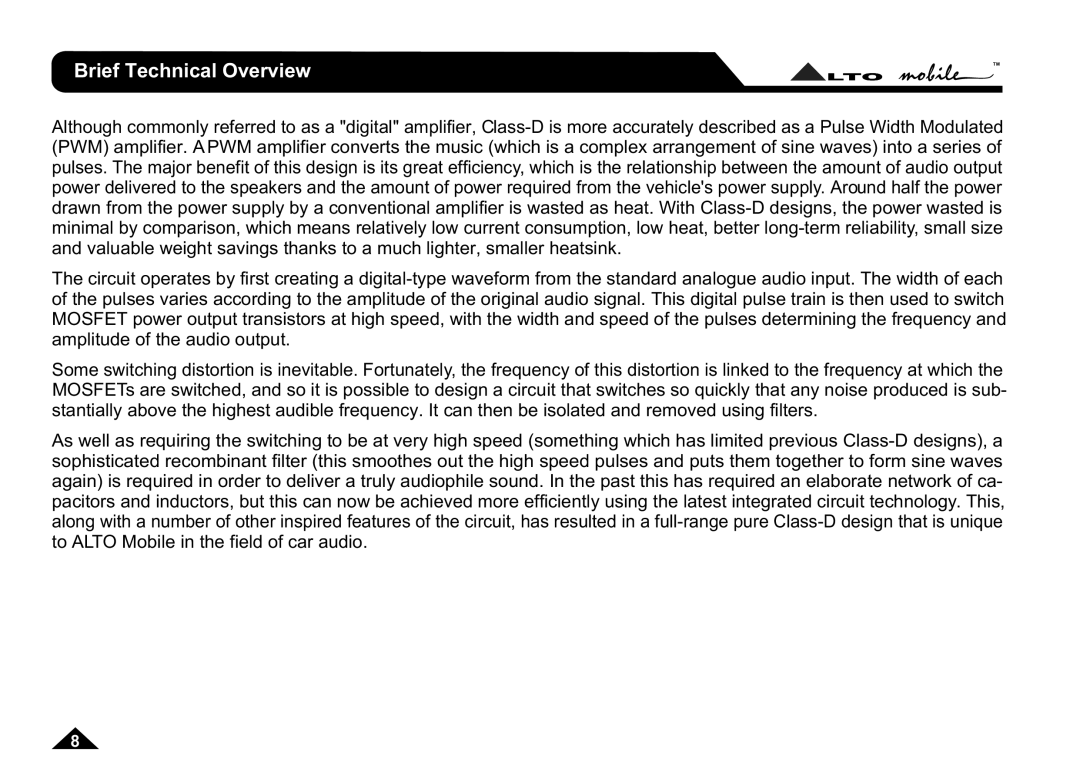
Although commonly referred to as a "digital" amplifier, Class-D is more accurately described as a Pulse Width Modulated (PWM) amplifier. A PWM amplifier converts the music (which is a complex arrangement of sine waves) into a series of pulses. The major benefit of this design is its great efficiency, which is the relationship between the amount of audio output power delivered to the speakers and the amount of power required from the vehicle's power supply. Around half the power drawn from the power supply by a conventional amplifier is wasted as heat. With Class-D designs, the power wasted is minimal by comparison, which means relatively low current consumption, low heat, better long-term reliability, small size and valuable weight savings thanks to a much lighter, smaller heatsink.
The circuit operates by first creating a digital-type waveform from the standard analogue audio input. The width of each of the pulses varies according to the amplitude of the original audio signal. This digital pulse train is then used to switch MOSFET power output transistors at high speed, with the width and speed of the pulses determining the frequency and amplitude of the audio output.
Some switching distortion is inevitable. Fortunately, the frequency of this distortion is linked to the frequency at which the MOSFETs are switched, and so it is possible to design a circuit that switches so quickly that any noise produced is sub- stantially above the highest audible frequency. It can then be isolated and removed using filters.
As well as requiring the switching to be at very high speed (something which has limited previous Class-D designs), a sophisticated recombinant filter (this smoothes out the high speed pulses and puts them together to form sine waves again) is required in order to deliver a truly audiophile sound. In the past this has required an elaborate network of ca- pacitors and inductors, but this can now be achieved more efficiently using the latest integrated circuit technology. This, along with a number of other inspired features of the circuit, has resulted in a full-range pure Class-D design that is unique to ALTO Mobile in the field of car audio.

